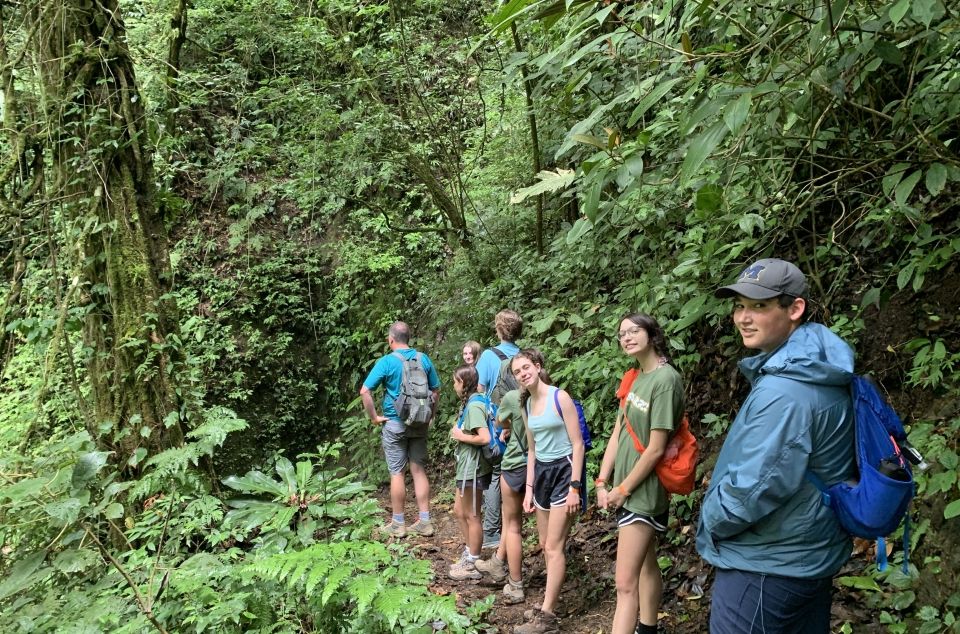Everything You Need to Know About Taking a Gap Year
Thinking about taking a gap year abroad? You may have a lot of questions varying from cost to length of time, and even where to go.
Big decisions can be hard, so we want to help. Read on for a thorough overview of everything related to the gap year.
What Is a Gap Year?
A gap year is an intentional break from school, typically taken after high school graduation and immediately before starting college or university.
@cieeglobalnavigators Lets talk about a GAP year! Have you ever considered taking some time off after graduating to explore the world? Check out our blog in our link in bio for more information or register for our info session! #gapyear #cieeglobalnavigators #studyabroad #highschoolstudyabroad ♬ Sunshine - WIRA
What Things Can You Do on a Gap Year?
Since no one gap year is alike and every student's experience is different, the world can truly be your oyster.
Students typically take a gap year to experience a different culture abroad before dedicating time to another four years of higher education.
Depending on where you go and what you want to accomplish, there are hundreds if not thousands of things to explore.

A Gap Year With CIEE
Experience the ultimate language immersion by taking 15-20 hours of classes each week while living with a host family in one of six vibrant countries: Spain, France, Germany, Japan, Italy, or Morocco. This immersive approach not only enhances your language skills but also allows you to fully integrate into the local culture, offering a deep and authentic experience.
From exploring the iconic streets of Paris to capturing memories in the medinas of Rabat, extraordinary adventures await you abroad. Throughout your program, you'll have the peace of mind that comes with knowing our dedicated, in-country CIEE staff are available around the clock to support your health, safety, and security, ensuring a smooth and enriching experience.
There are so many opportunities to pursue that it can be overwhelming at times.
To make things simpler, we've compiled a list of our most popular gap year programs below:
- Japanese Language & Culture in Kyoto, Japan
- French Language & Culture in Paris, France
- Spanish Language & Culture in Seville, Spain
Want an even deeper insight into what life is like on a gap year program? The CIEE Gap Year Abroad blog is written by students and educators to showcase their day-to-day lives abroad.
Where Do You Stay on a Gap Year?
Most gap year programs would assign you to a homestay.
A homestay is a type of accommodation in which local residents share their house with a student. They are a great way to truly immerse yourself in the city in which you’re studying.
Homestays help you practice your newly-acquired skills, especially if you’re learning a new language, as well as intimately experience the country’s food, culture, and traditions.

How Long Does a Gap Year Last?
Most programs last as short as a semester (11 to 15 weeks) to as long as a year.
If you’re looking to travel for a shorter period of time, CIEE offers high school summer abroad programs that are a month long or shorter.
How Much Does a Gap Year Cost?
Costs vary based on location and program length. As a general estimate, shorter programs (11-13 weeks) average around $16,000 to $18,000. Longer programs (29-34 weeks) run from the low to high $29,000-$33,000 range.
We recommend browsing our list of gap year programs and checking out the Dates & Fees sections on the bottom of each page for more accurate costs.
Staying home comes at a cost too. According to The Washington Post, it costs on average $17,000 per year to raise a child in the U.S. A student could easily find a program less than that amount and live the experience of a lifetime abroad.
If cost is an obstacle, we have a list of fundraising ideas to help ease the burden.
We also recommend that you check out our summer travel programs, which are shorter in length but great for those looking for a less expensive option.
How Do Colleges and Universities View Gap Years?
Most colleges and universities look for variety in college applications, and what is more unique than time spent studying abroad?
According to the 2020 Gap Year Alumni Survey, a survey conducted by the Gap Year Association, only 3% of their program participants faced resistance from their respective colleges and universities when planning their gap year abroad.
In fact, the most common obstacles to taking a gap year were deciding which program was the right fit (44%) and financial constraints (37%).
Is a Gap Year Worth It?
Benefits are often subjective, but data shows that studying abroad can make quite an impression.
The aforementioned Gap Year Alumni Study asked students the impact of their gap year experience.
The top three self-reported skills that increased for this particular group of participants were:
- Cultural competency (98%)
- Maturity (98%)
- Self-confidence (97%)
84% of participants also reported that studying abroad increased their academic motivation, while 82% stated that it gave them a competitive advantage when applying to college and/or jobs.

Should You Take a Gap Year?
That’s entirely up to you and your family. Doing your research and discussing your options are great first steps to making what could be a life-changing decision.
How Can I Apply?
Here at CIEE, we want to make your application process as simple as possible. Apply online by clicking the button below or apply from the program you're most interested in on our Gap Year Programs page.
Do you still have questions? We have answers.
If you can't find the answer to your question or would like to speak with an Enrollment Coordinator, you can schedule a call for further clarification.
We wish you the best of luck with your research, and to those who decide to take the leap, bon voyage!



